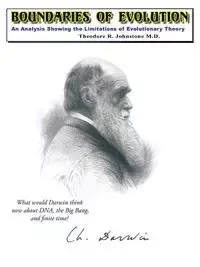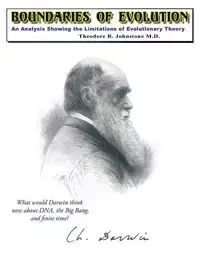Boundaries of Evolution - Johnstone M.D. Theodore R.
Boundaries of Evolution - Johnstone M.D. Theodore R.
- What Would Darwin Think Now about DNA, the Big Bang, and Finite Time?
AutorzyJohnstone M.D. Theodore R.
Random mutations occurring in DNA, accepted or rejected by natural selection, are hailed as the source of advancement for the increase in biotic complexity. The most common time for mutations to occur in the DNA is during replication. Therefore, evolutionary advancement should occur faster in biota with the most frequent replication cycles. If both evolutionary theory and the fossil record are correct, prokaryotes, which replicate in as little as 20 minutes took 2 billion years to evolve the first single-celled eukaryote. Single-celled eukaryotes, generally having shorter reproductive times than multi-celled eukaryotes, took another billion years to evolve the first multi-celled eukaryote. Then during Cambrian times, the multi-celled eukaryotes with the longest reproductive cycles literally exploded in diversity in a comparatively short time. How could this be? Other inadequacies of Darwin's theory are presented for everyone to see.
EAN: 9781490745664
Marka
Symbol
973FJB03527KS
Rok wydania
2014
Elementy
202
Oprawa
Miekka
Format
21.0x28.0cm
Język
angielski

Bez ryzyka
14 dni na łatwy zwrot

Szeroki asortyment
ponad milion pozycji

Niskie ceny i rabaty
nawet do 50% każdego dnia
Niepotwierdzona zakupem
Ocena: /5
Marka
Symbol
973FJB03527KS
Kod producenta
9781490745664
Autorzy
Johnstone M.D. Theodore R.
Rok wydania
2014
Elementy
202
Oprawa
Miekka
Format
21.0x28.0cm
Język
angielski

Boundaries of Evolution describes the unlikelihood of evolutionary theory to explain how it is supposed to scale three major biological cliffs. The first cliff is the need for a logical explanation of how random chemical reactions could produce the first living cell from the primordial soup. The second is the problem of explaining how the first single-celled eukaryote evolved from a prokaryote. Mathematical improbabilities of evolutionary theory to scale the first two cliffs, in the time available, are demonstrated. The third insurmountable cliff is the necessity for a reasonable explanation of how millions of different kinds of multi-celled eukaryotes could have quickly evolved from single-celled eukaryotes.
Random mutations occurring in DNA, accepted or rejected by natural selection, are hailed as the source of advancement for the increase in biotic complexity. The most common time for mutations to occur in the DNA is during replication. Therefore, evolutionary advancement should occur faster in biota with the most frequent replication cycles. If both evolutionary theory and the fossil record are correct, prokaryotes, which replicate in as little as 20 minutes took 2 billion years to evolve the first single-celled eukaryote. Single-celled eukaryotes, generally having shorter reproductive times than multi-celled eukaryotes, took another billion years to evolve the first multi-celled eukaryote. Then during Cambrian times, the multi-celled eukaryotes with the longest reproductive cycles literally exploded in diversity in a comparatively short time. How could this be? Other inadequacies of Darwin's theory are presented for everyone to see.
EAN: 9781490745664
Random mutations occurring in DNA, accepted or rejected by natural selection, are hailed as the source of advancement for the increase in biotic complexity. The most common time for mutations to occur in the DNA is during replication. Therefore, evolutionary advancement should occur faster in biota with the most frequent replication cycles. If both evolutionary theory and the fossil record are correct, prokaryotes, which replicate in as little as 20 minutes took 2 billion years to evolve the first single-celled eukaryote. Single-celled eukaryotes, generally having shorter reproductive times than multi-celled eukaryotes, took another billion years to evolve the first multi-celled eukaryote. Then during Cambrian times, the multi-celled eukaryotes with the longest reproductive cycles literally exploded in diversity in a comparatively short time. How could this be? Other inadequacies of Darwin's theory are presented for everyone to see.
EAN: 9781490745664
Niepotwierdzona zakupem
Ocena: /5
Zapytaj o produkt
Niepotwierdzona zakupem
Ocena: /5
Napisz swoją opinię

